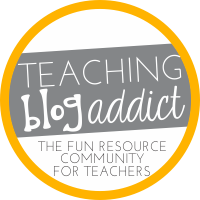COMMON Sense with CORE Standards: Including Informational Text in Our Literature Based Classroom
Common Core…It seemed like a looming monster, yet it has arrived in full force, at least for most of us. And now that it is here, let’s tackle it head on! If it overwhelms us, let’s step back and breathe and do what we as teachers do best…monitor and adjust.
One of the greatest complaints from English teachers is most likely the fact that so much emphasis is placed on informational text. “What about our novels and stories?” we whine. Luckily, as seventh grade teachers, 50% of our text should still be literary. Some high school English teachers only have a 30% space to fill with fiction.
Really, it is all a game of intertwinement.
We must pull in informational text with our current literature, and who says it can’t be fun? Last year, just like always, we read “Three Skeleton Key” by George G. Toudouze in our literature books. In this chilling narrative, sea rats overtake a lighthouse and trap three men inside. After finishing this short story, my colleague Tammy and I decided to create a common core unit on rats. We searched for several articles about rats from books and the Internet. For example, we read a chapter titled “Yummy Rats” from Oh Rats! The Story of Rats and People by Albert Marrin. This chapter explained how people in other countries eat rats! Some of our students were completely grossed out, but we had their attention. After taking notes on these articles and viewing short videos from YouTube, students answered constructed response questions which required them to support their answers with text. At the end of the unit, our students compiled their information and wrote an essay taking the stance that either rats are good and helpful to our world or hideous and disgusting creatures.
Information (and Informational Text) is Everywhere
Here is another example of matching nonfiction with literature. We begin our year reading the unforgettable novel The Man Who Loved Clowns by June Rae Wood. In this book, one of the main characters has Down syndrome. This provides an avenue for us to include informational text on Down syndrome, chromosomes, and even the Special Olympics. However, we don’t stop there. The book is set in the early eighties, which opens up another area of research. At one point in the book, two characters salute the American flag as the television shows signs off the air at midnight. Some of our students have no idea that once upon a time there were no cell phones much less the fact that you couldn’t just wake up at 2:00 in the morning and watch television. What an opportunity to pull in some history that may actually intrigue them! Thus, we include research of this decade — again with articles and constructed response questions.
So before we panic about what type of informational texts we are going to include, we just need to take a look at what we already teach and seek ideas there!




